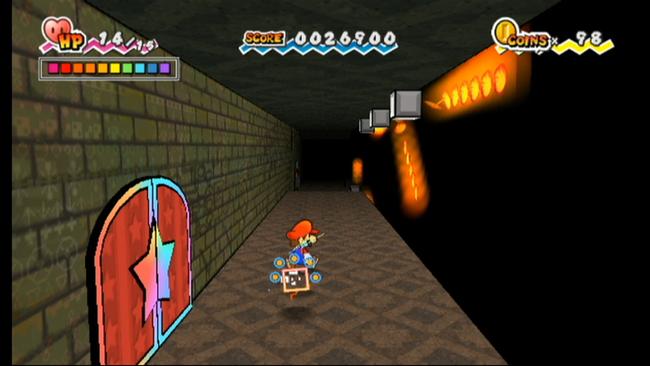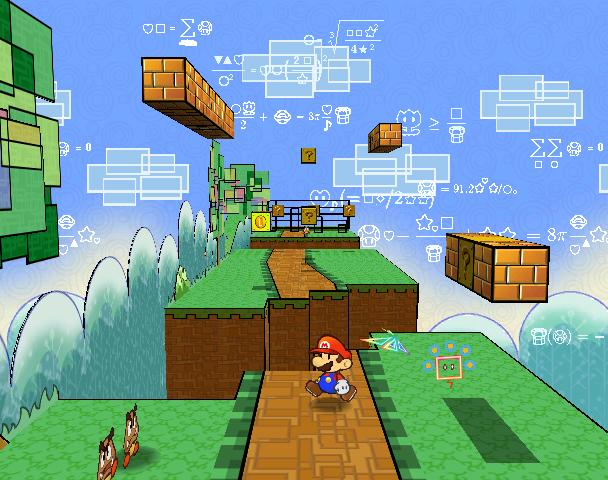
Super Paper Mario is a gateway to the genre for young gamers
Super Mario is huge in my house lately, and for good reason. With three kids under one roof, Mario Mania has been in full swing since the release of the Super Mario Bros. Movie this spring and shows no signs of letting up. From a crash course through the original games – my son calls the NES games ‘Lego Mario’ – a turn with Super Mario Run, and most recently Luigi’s Mansion 3, I’ve been happy to oblige the requests for the family’s favorite plumber. During our most recent trip to the library, my son was disappointed to learn all the Mario books were checked out. It was then we were reminded of our library’s extensive video game collection, boasting a handful of Mario games. My son eyed a copy of Super Paper Mario for the Wii. While playing it with my kids, I realized: with scaled back RPG mechanics and light platforming elements, Super Paper Mario is a great introduction to the genre, especially for younger gamers.
Super Mario RPG for the SNES was an iconic mashup of turn-based combat and platforming gameplay. It was followed by two Paper Mario titles, introducing an inventive paper visual aesthetic and reducing some RPG elements. When the series transitioned to the Wii, Super Paper Mario moved even further, removing turn-based combat entirely in favor of a side-scrolling 2D/3D platformer with action-RPG elements. Players control Mario or his allies through 2D environments, utilizing their respective talents as needed: Peach can float to reach farther distances, while Bowser can claw through walls or items, for example.

Players will navigate the environments while collecting coins or items while also fighting enemies with a stomp, claw, or weapon.. The central gimmick sees players, controlling Mario, switching between a 2D or 3D perspective, revealing hidden items, doorways, and the like to solve puzzles or advance. There is no turn-based combat where players choose an attack; rather they should time their jumps or other attacks properly to land. Mario has hit points, but so do his enemies.
The end result is an engaging yet accessible hybrid of party management and light action combat, suffused with enough RPG mechanics that feel natural without overwhelming a new player. Mario can horde restoratives (mushrooms, natch), fire flowers or other offensive items to deploy, using Wii motion controls to shake the controller to kick a Koopa shell. The platforming and combat are both simple to learn, allowing younger gamers to negotiate both the platforming elements while also timing jumps and other attacks just right.

Similarly, the game helps demonstrate the concept of leveling up – as Mario accumulates coins and defeats enemies, his score increases. Level increases occur at regular intervals, providing marginal increases to statistics, including Mario’s HP. These systems may be rudimentary, but they introduce or reinforce these concepts for budding RPG aficionados. Mario needs to fight enemies to grow stronger, incentivizing the player to further engage the game’s systems – a feature that is oddly missing from more recent Paper Mario titles. Watching Mario’s scant HP gradually increase conveys that sense of growth in a tangible, impactful way for young gamers. After all, who doesn’t remember their first level grind in a game?
Shifting between planes encourages exploration, creative thinking, and problem solving. When players are stuck, they can swap between Mario and his allies, or even rely on the handful of fairy-like Pixl characters who have their own individual abilities, like serving to throw an object or explode. Anyone who has been stumped by a particularly difficult puzzle in an RPG or scoured an entire map to find hidden items can appreciate the game’s gentle onboarding with these concepts.

While the gameplay and concepts are friendly to new gamers and readers, this is still a game a parent should expect to play with their younger child, especially those who haven’t mastered independent reading. The story is child-friendly in a PG movie rating way: some jokes are told with a wink, certain to go over the heads of young viewers. Yet while the story is heartfelt and even sometimes moving, there is little to no voice acting and seemingly endless text to read. It is easy to understand the plot however, even if gamers (or their parents) paraphrase large sections of text.
Super Paper Mario has been a great introduction to role playing games for my young children, especially my daughter as she learns to read. An earnest story coupled with simple-yet-engaging platforming and RPG mechanics has helped teach her concepts regarding leveling up, stat and inventory management, and the importance of clearing a map while looking for items. As a parent, we track the important milestones – baby’s first word, step, first day of school – preserving keepsakes and printing photos of these important memories. Why not add “Baby’s First RPG” to the book?